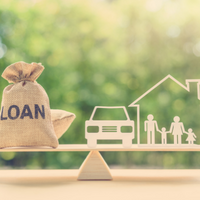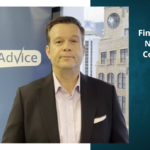Author Katrina Shanks, CEO Financial Advice NZ Article originally published on Stuff.co.nz….
Most of us have had personal loans – be they car loans, mortgages, or loans for renovations, to name just a few, over our lifetimes.
These loans have most probably been a mix of nice-to-haves and must-have purchases.
There are three sorts of debt – good, okay, and bad. Let’s have a look at each of these.
Investment debt is good because it’s aimed at helping you build your wealth for a secure future.
However, investment debt needs to be considered carefully. For example, borrowing for a high-risk investment such as cryptocurrency needs to align with your risk tolerance and your ability to pay the debt if the market takes a tumble, as we have seen over the past few months.
Mortgages are okay debt because they are serving a purpose and are usually for something that is likely to give you a return over time.
Personal loans are generally bad debt, though there are exceptions.
These exceptions include where you borrow to do something such as consolidating your loans or credit card debt into one loan, which is often at a lower interest rate. Or even to purchase a vehicle to help get you to your place of employment, which provides you with a revenue stream.
Up until Covid-19 arrived, personal loans were relatively easy to get. Just prove your ability to repay the loan by showing your payslip, and you’re away.
But that has now changed as rising interest rates and less tolerance for risk by main lenders have combined with a general lack of basic financial literacy and good financial behaviours by many people to make them more of a problem.
One of the most common debts is mortgages. About 1.1 million people have them, to a total value of $34 billion.
The most dangerous debt is what is commonly known as payday loans.
These are a really high-cost short-term loan you have to pay back within a set time. If you don’t, the high interest rate compounds significantly to a point you could end up paying four or five times the original amount.
I have seen some with an interest rate of 0.8% per day, and when you add administration fees, it can make for really expensive borrowing. At that rate, it’s the highest cost of borrowing you can have.
For example, the total repayment for two weeks for $500 can quickly turn into $541, or into $1091 for $1000 loan. Often on top of that there will also be an establishment fee of up to $300. And there is more cost if you default on your loan. If you do, that can add $30 a week to the total.
Because you’re borrowing money you can’t afford to be spending, you are immediately at a disadvantage.
If you can pay it back within a couple of weeks, that’s fine, but sometimes getting on the treadmill is easier than getting off it, and once you’re on, it’s tempting to stay there and get more.
Some golden rules:
- Ideally, borrow only if you know you can repay it in time.
- Have a financial plan, so you know the big expenditure items which are coming up – whether that be a replacement of a washing machine or a new car.
- Try to save for what you need and want instead of borrowing.
- Have an emergency fund for when something unexpected goes wrong, so you do not have to borrow funds and go into debt.
- Be aware, your application for a loan may show up on your credit report, meaning further lenders will see you needed funds.
- Take out a payday loan only if you have no other options – use it as a last resort. There are alternatives, and you should consider them before applying for one. These include from Work and Income (if you are on a benefit), The Good Shepherd and the Salvation Army (as long as you are on a limited income), and BNZ (special rates for students, apprentices and recent graduates).





